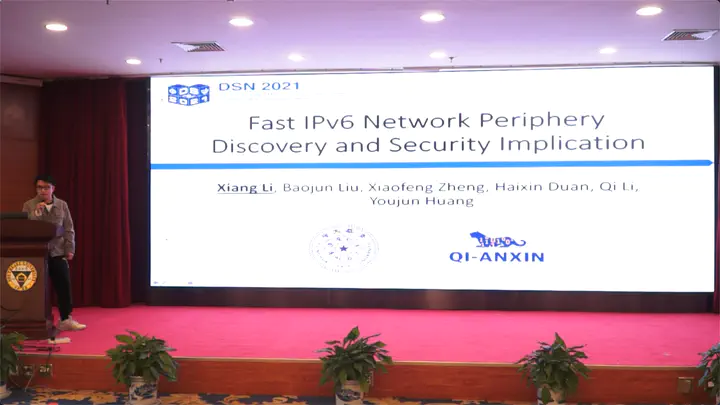Speech of the DSN '21 paper: Fast IPv6 Network Periphery Discovery and Security Implications

Abstract
We propose a novel IPv6 network periphery discovery approach. Specifically, XMap, a fast network scanner, is developed to find the periphery, such as a home router. We evaluate it on twelve prominent Internet service providers and harvest 52M active peripheries. Grounded on these found devices, we explore IPv6 network risks of the unintended exposed security services and the flawed traffic routing strategies. First, we demonstrate the unintended exposed security services in IPv6 networks, such as DNS, and HTTP, have become emerging security risks by analyzing 4.7M peripheries. Second, by inspecting the periphery’s packet routing strategies, we present the flawed implementations of IPv6 routing protocol affecting 5.8M router devices. Attackers can exploit this common vulnerability to conduct effective routing loop attacks, inducing DoS to the ISP’s and home routers with an amplification factor of >200. We responsibly disclose those issues to all involved vendors and ASes and discuss mitigation solutions. Our research results indicate that the security community should revisit IPv6 network strategies immediately.
As one of the delegates from Tsinghua University, I presented our latest research on the IPv6 network security at the THU and SEU academic communication meeting.
Teachers, students, and researchers from the Institute of Network Science and Cyberspace (Tsinghua University), QI-ANXIN Technology Research Institute, and School of Cyber Science and Engineering (Southeast University) attended this meeting and shared their research ideas.